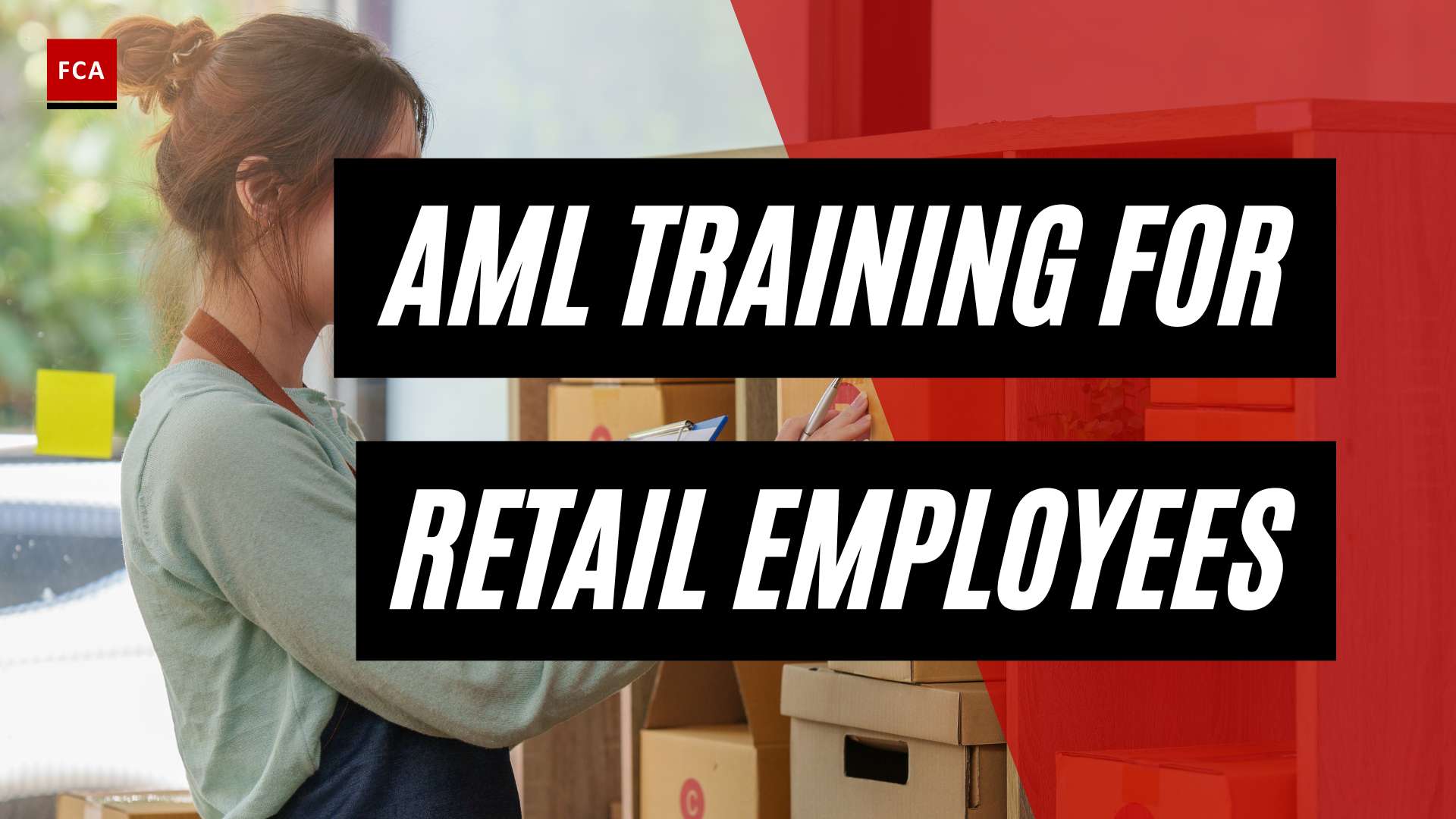Understanding AML Compliance
In the financial sector, one of the most significant areas of focus is AML or Anti-Money Laundering. To ensure compliance with AML regulations and effectively combat financial crimes, many institutions utilize advanced tools like AML compliance software.
Basics of AML Compliance
At its core, AML compliance involves implementing policies, procedures, and controls to prevent, detect, and report money laundering activities. This includes identifying and reporting suspicious transactions, conducting due diligence on customers, and maintaining comprehensive records of financial transactions.
A key aspect of AML compliance is the use of AML compliance software. This software assists financial institutions in monitoring customer behavior and transactions for suspicious activities to prevent money laundering, terrorism financing, and other financial crimes.
Using advanced analytics and algorithms, AML compliance software can identify unusual patterns and detect potential risks more efficiently than manual processes. This greatly enhances an institution’s ability to comply with regulations and report suspicious activities to authorities.
Importance of AML Compliance
AML compliance is not just a legal requirement but also an integral part of maintaining the integrity and reputation of financial institutions. Non-compliance can result in hefty fines, regulatory sanctions, and significant reputational damage.
Moreover, with the increasing complexity of financial crimes and the evolving regulatory landscape, the demand for sophisticated AML compliance software is rising globally. This software allows institutions to stay ahead of illicit activities, ensuring financial integrity and regulatory compliance (NICE Actimize).
Through the use of AML compliance software, financial institutions can establish risk-based approaches to customer due diligence (CDD) and enhance monitoring processes to reduce false positives. This allows them to focus resources on high-risk activities more effectively (NICE Actimize).
In conclusion, effective AML compliance is crucial for the success and survival of any financial institution. By understanding the importance of AML compliance and utilizing the right tools, institutions can ensure they are well-equipped to tackle financial crimes and regulatory challenges head-on. For more insights into various aspects of AML compliance, explore our resources on AML Compliance Program, AML Compliance Officer, and AML Compliance Checklist.
AML Compliance Software Explained
In an increasingly complex financial landscape, the use of technology to ensure compliance with Anti-Money Laundering (AML) regulations is paramount. More specifically, AML compliance software is an instrumental tool that supports financial institutions in their fight against financial crimes.
The Role of AML Software
AML compliance software assists financial institutions in monitoring customer behavior and transactions for suspicious activities to prevent money laundering, terrorism financing, and other financial crimes (NICE Actimize). It employs advanced analytics and algorithms to identify unusual patterns and detect potential risks more efficiently than manual processes, thus enhancing the institution’s ability to comply with regulations and report suspicious activities to authorities.
AML software generally has three facets: client screening software for verifying the identity of new clients, transaction screening software for analyzing multiple data points in transaction messages, and AML transaction monitoring software to analyze patterns of each client’s transactions against a library of rules to identify potential criminal profiles (Napier).
Moreover, the software aids in determining transactional behavior patterns that fit criminal profiles, identifying anomalous transactions for further investigation, and deciding on appropriate responses such as submitting a suspicious transaction report (STR) when necessary.
Benefits of AML Software
The benefits of using AML compliance software are manifold. It plays a crucial role in the financial sector by preventing or detecting anomalous activity, reducing false positives, and assisting companies in accurate reporting of suspicious transactions, thus supporting compliance with tightening legislation imposed by regulatory bodies.
Through the use of such software, financial institutions can establish a risk-based approach to customer due diligence (CDD) and enhance monitoring processes to reduce false positives and focus resources on high-risk activities more effectively (NICE Actimize).
Furthermore, AML software often includes features like watchlist screening, transaction monitoring, case management, regulatory reporting, and risk assessment capabilities to streamline compliance efforts and create audit trails for regulatory examinations.
In essence, AML compliance software serves as the backbone of an effective aml compliance program, enabling the aml compliance officer to perform their duties more efficiently and effectively.
In conclusion, AML software encompasses technologies to prevent, detect, and report potential money laundering activities and financial crimes. It is used by financial institutions and regulated organizations to comply with AML and counter financing of terrorism (CFT) regulations, offering features like risk profiling, ID verification, customer due diligence, watchlist screening, transaction monitoring, reporting, and audit trail capabilities. Therefore, investing in an AML compliance software solution is a crucial step in safeguarding your business from financial crimes and maintaining regulatory compliance.
Key Features of AML Compliance Software
AML compliance software encompasses a range of functionalities designed to help businesses detect, prevent, and report potential money laundering activities and financial crimes. These features streamline compliance efforts, create audit trails for regulatory examinations, and ensure continuous compliance with AML and counter financing of terrorism (CFT) regulations (Finscan). In this section, we will explore three key features of AML compliance software: Customer Due Diligence, Transaction Monitoring, and Regulatory Reporting.
Customer Due Diligence
The first line of defense in any AML compliance program is Customer Due Diligence (CDD). AML software should enable screening of customers against sanctions lists issued by local, national, and international authorities, including OFAC sanctions, EU sanctions, United Nations Security Council sanctions, etc.
With advanced features like risk profiling and ID verification, AML software provides a robust platform for conducting thorough CDD. This facilitates effective data quality in screening, limiting false positives and false negatives, and ensures continuous compliance with AML compliance requirements.
Transaction Monitoring
AML transaction monitoring is a crucial component of any AML compliance framework. This feature analyzes patterns of each client’s transactions against a library of rules to identify potential criminal profiles.
A key feature of AML software is its ability to trigger alerts or notifications when risk thresholds are exceeded. This assists organizations in proactively identifying and mitigating potential AML risks in a timely manner, ensuring adherence to AML compliance regulations.
Regulatory Reporting
Regulatory reporting is an essential aspect of AML compliance. AML software includes features like case management and reporting capabilities that streamline the reporting process and help organizations meet their reporting obligations in a timely and efficient manner (NICE Actimize).
In addition to generating reports, AML software also helps create audit trails. This is crucial for regulatory examinations and can greatly assist an AML compliance officer during inspections.
These key features make AML compliance software an invaluable tool in any organization’s efforts to combat money laundering and maintain regulatory compliance. As such, businesses should carefully consider these functionalities when selecting an AML software solution. For a detailed AML compliance checklist, visit our AML compliance checklist page. Similarly, for insights on AML compliance training, you can refer to our AML compliance training page.
Top AML Compliance Software Providers
When it comes to adhering to Anti-Money Laundering requirements, having the right software is crucial. The following are three of the top AML compliance software providers as of September 2022, according to Gartner: NICE Actimize, SAS Anti-Money Laundering, and Oracle Financial Services.
NICE Actimize
NICE Actimize is one of the leading providers of AML compliance software. Users have praised the software for its intuitive user interface, robust functionality, and wide range of features for AML compliance. The platform provides comprehensive solutions to streamline compliance operations, making it easier for compliance officers to monitor transactions, manage risks, and adhere to regulatory requirements.
Specifically, NICE Actimize offers advanced analytics, real-time detection capabilities, and advanced case management features. These functionalities make it a powerful tool in the arsenal of any AML compliance officer or team.
SAS Anti-Money Laundering
SAS Anti-Money Laundering is another notable AML compliance software. It stands out for its comprehensive alert generation, ease of use, and flexibility in setting alert thresholds. The software gives users the ability to customize their alert systems based on their specific needs and risk thresholds.
Additionally, SAS Anti-Money Laundering provides powerful analytics, data management capabilities, and seamless integration with other SAS products. This comprehensive platform can play a vital role in any AML compliance program.
Oracle Financial Services
Oracle Financial Services Analytical Applications (OFSAA) is a comprehensive software solution for managing AML compliance operations. It has received accolades for its scalability, integration capabilities with other systems, and overall effectiveness in AML compliance operations.
Oracle’s AML compliance software provides a wide range of tools and functionalities, including advanced analytics, real-time monitoring, and comprehensive reporting capabilities. These features are designed to help organizations effectively manage their AML compliance requirements and reduce the risk of financial crime.
These three AML compliance software providers offer robust solutions for organizations of all sizes and across different industries. When selecting the right AML compliance software, it’s important to consider the specific needs and requirements of your organization, the software’s integration capabilities, and the level of customer support provided by the software provider. By doing so, your organization can effectively manage its AML compliance operations and stay ahead of regulatory changes.
Implementing AML Compliance Software
Implementing AML compliance software is a significant step that aids businesses in mitigating risks associated with non-compliance, such as financial penalties and reputational damage. This section will guide you through the steps of implementing compliance software and how to maximize its benefits.
Steps to Implementation
-
Identify Your Needs: Understand the specific challenges and regulatory requirements your business faces in terms of AML compliance. This will enable you to choose software that best fits your needs.
-
Evaluate Different Options: There are various AML compliance software providers, such as NICE Actimize, SAS Anti-Money Laundering, and Oracle Financial Services. Evaluate the features, capabilities, and cost of different software to make an informed decision.
-
Implementation: Once the software is chosen, work with the provider to implement it into your existing systems. This may involve integrating the software with your existing IT infrastructure, configuring the software to meet your specific needs, and training your employees to use the software effectively.
-
Testing: Conduct testing to ensure the software is working as expected. This may involve running test cases and analyzing the results.
-
Go Live: After successful testing, the software can be put into operation. Monitor its performance regularly to ensure it is effectively helping your business comply with AML regulations.
Maximizing the Benefits
To maximize the benefits of AML compliance software, consider the following:
-
Regularly Update the Software: Keep the software updated to ensure you are leveraging the latest features and improvements. This will help your business stay compliant with the most recent AML regulations.
-
Train Your Employees: Provide regular aml compliance training to your employees so they can effectively use the software. This will enable them to identify potential issues and take appropriate action in a timely manner.
-
Monitor the Software’s Performance: Regularly review the software’s performance to ensure it is meeting your business’s needs. This includes checking the number of false positives and the accuracy of the software’s risk assessments.
By implementing AML compliance software and effectively using it, businesses can significantly reduce their risk of non-compliance, streamline their compliance processes, and protect their reputation. For more information on AML compliance, check out our articles on aml compliance program, aml compliance officer, and aml compliance checklist.
Adhering to AML Laws and Regulations
In the fight against money laundering, adhering to laws and regulations at both the international and regional levels is crucial. For professionals in compliance, risk management, and anti-financial crime, understanding the nuances of these laws is key to implementing an effective aml compliance program and leveraging the full power of aml compliance software.
International AML Standards
The Financial Action Task Force (FATF), established in 1989 by the G-7 summit, plays a crucial role in setting international standards for AML compliance programs. With 39 member countries including significant regions like the United States, United Kingdom, Japan, China, Germany, and the European Commission, FATF can impose fines and sanctions on entities failing to comply with its standards.
Compliance officers, risk managers, and anti-financial crime professionals should prioritize aligning their AML compliance efforts with FATF recommendations. This involves ensuring that their AML compliance software can adequately support customer due diligence, transaction monitoring, regulatory reporting, and other key aspects of an aml compliance framework.
Specific AML Regulations by Region
In addition to the FATF standards, there are specific AML regulations enforced at the regional level. These laws often provide more detailed guidelines tailored to the unique financial landscape of each region.
In the European Union, for example, the 6th Anti-Money Laundering Directive (6AMLD) broadens the definition of money laundering, enhances penalties, establishes central registers for beneficial ownership, and identifies 22 predicate offenses related to money laundering. A wide range of entities, from financial institutions to virtual asset service providers and tax advisors, are covered under this directive (Sanction Scanner).
In the United States, the Bank Secrecy Act (BSA) mandates financial institutions to maintain detailed records of clients’ identities and transactions, and submit reports on suspicious activities. Non-compliance or intentional neglect can result in penalties of up to $250,000 or imprisonment for up to five years (Sanction Scanner).
Each of these regulations has specific requirements that can be effectively met using AML compliance software. By understanding these laws, compliance professionals can ensure their organizations are well-prepared to mitigate the risks of money laundering and meet all international and regional regulatory expectations.
For detailed information about the requirements of these regulations and steps to ensure compliance, you can refer to our resources on aml compliance requirements and aml compliance checklist. To learn about the role of a compliance officer in maintaining adherence to these regulations, check out our article on aml compliance officer.








